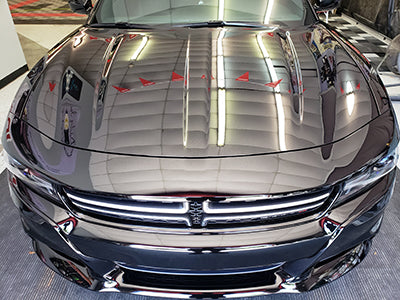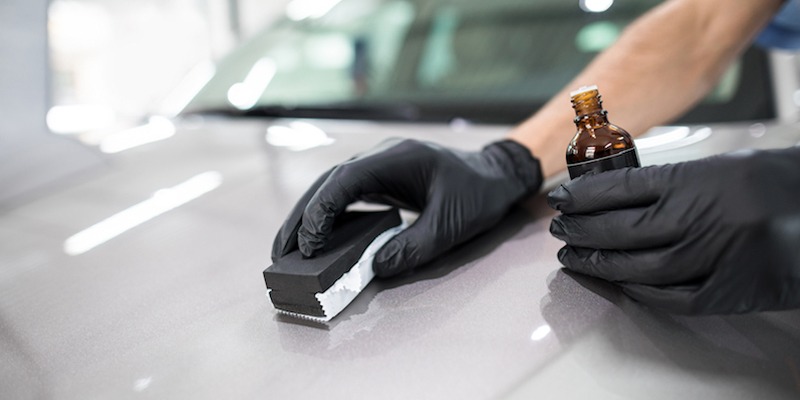Checking Out the Durable Protection of Ceramic Coating for Your Automobile
Checking Out the Durable Protection of Ceramic Coating for Your Automobile
Blog Article
The Significance of Ceramic Coating: Shielding Your Auto's Outside With Precision
In an era where maintaining the aesthetic and functional integrity of your lorry is vital, ceramic finishing becomes a crucial option. This protective layer not just defend against environmental adversities yet also boosts the aesthetic appeal of your auto. With its one-of-a-kind bonding properties, ceramic layer provides a degree of defense that far goes beyond standard waxing methods. How precisely does it attain such amazing outcomes? As we explore the nuances of its application and contrast it to other options, one can not aid but question concerning the specifics that make this technology important for modern-day car care.
Advantages of Ceramic Coating
When it involves preserving an automobile's aesthetic charm, ceramic layer offers considerable advantages. This sophisticated protective layer offers a long lasting guard versus ecological impurities, consisting of dust, crud, and harmful UV rays. By forming a semi-permanent bond with the car's paint, ceramic coatings properly avoid oxidation and fading, ensuring that the auto keeps a shiny, showroom-like surface for a prolonged period. This not only boosts the lorry's aesthetic charm however also contributes to its long-term worth.
Along with its safety top qualities, ceramic finish provides amazing hydrophobic residential properties, triggering water and other fluids to grain off effortlessly. This attribute streamlines the cleaning procedure, as dirt and particles are less most likely to stick to the surface area, minimizing the frequency and initiative required for upkeep. The covering's resistance to chemical discolorations from acidic contaminants like bird droppings and tree sap is an additional noteworthy benefit, decreasing potential paint damages.
Ceramic coverings likewise boost scratch resistance, supplying a layer that can absorb minor abrasions and swirl marks. This feature is particularly helpful in maintaining a beautiful surface area, reducing the probability of noticeable imperfections and protecting the honesty of the car's paintwork gradually.

Just How Ceramic Covering Works
Comprehending the technicians behind ceramic layer reveals its efficacy as a protective option for automobiles. Ceramic layers are basically fluid polymer applications that chemically bond with a vehicle's factory paint, producing a protective layer. This layer works as an obstacle versus ecological impurities such as ultraviolet, gunk, and dust rays, which can break down an auto's outside with time. The vital part in ceramic coating is silicon dioxide (SiO2), which originates from quartz crystals and is known for its remarkable hardness and sturdiness.
Application of ceramic finishing entails a thorough process. Initially, the lorry's surface area should be thoroughly cleansed and decontaminated to ensure optimum bond. Once used, the liquid polymer creates a semi-permanent bond with the paint, solidifying into a clear, resilient guard. This shield enhances the auto's gloss and hydrophobic residential or commercial properties, facilitating less complicated cleaning by causing water and impurities to grain and slide off effortlessly.
Additionally, the layer's molecular structure supplies resistance to minor scratches and chemical spots. Unlike waxes or sealers that sit on top of the paint, ceramic layers integrate with the surface, supplying lasting security. This assimilation is fundamental to its efficiency, making certain the car's surface continues to be pristine for many years.
Contrasting Ceramic Coating to Alternatives
In the world of auto defense, ceramic coating stands as a powerful choice when compared to conventional options such as sealers and waxes. While waxes supply a temporary lustrous surface, commonly lasting just a few weeks to months, ceramic finishings supply a longer-lasting option, commonly sustaining for years. This toughness is attributed to the chemical bonding that happens when ceramic layers are used, developing a solid layer that is immune to ecological dangers.
Contrastingly, sealants, although more resistant than waxes, still disappoint the robust defense used by ceramic finishes. Sealants can generally last for approximately a year, supplying a synthetic shield versus certain elements. Nonetheless, they lack the remarkable hydrophobic buildings and UV security that ceramic coverings supply.
Additionally, ceramic finishes provide boosted scratch resistance, which neither waxes neither sealants can effectively match (ceramic coating). This is specifically valuable in preserving an auto's excellent appearance. In addition, ceramic finishings simplify upkeep efforts by minimizing the adherence of dirt and crud, consequently facilitating simpler cleansing. In summary, while standard waxes and sealers offer fundamental defense, ceramic finishings offer an extensive, lasting solution that considerably preserves the car and boosts's exterior surface.
Application Refine Clarified
Applying ceramic coating to a lorry needs a precise process to make sure ideal results and longevity. When cleaned, the vehicle is dried out and polished this content to remove any type of imperfections, as any type of existing swirls or scrapes can end up being more obvious after the finish is visit their website used.
Complying with surface area preparation, the application of the ceramic finishing starts. Using an applicator pad, the ceramic finish is applied in little areas to ensure even protection.
After application, the layer requires a certain healing period, during which the automobile should be secured from water and impurities. This healing procedure can differ depending upon the product but typically ranges from 24 to 48 hours. Ultimately, this comprehensive process is essential in attaining a durable and shiny finish.
Maintenance Tips for Longevity
To preserve the longevity of a ceramic coating, adherence to a disciplined upkeep regimen is necessary. Prevent automatic car cleans, as their rough brushes can endanger the finish's stability.
Post-wash, drying the vehicle with a clean microfiber towel prevents water places that might deteriorate the covering over time. In addition, apply a ceramic covering booster every couple of months. These boosters strengthen the hydrophobic properties and boost the finishing's protective capacities, ensuring it continues to be efficient against impurities.
Remember that vehicle parking locations play a vital role in upkeep. ceramic coating. Whenever possible, park the original source in shaded locations to reduce UV direct exposure, which can slowly weaken the finish. For long-term storage space, consider utilizing a vehicle cover for included protection versus ecological aspects
Verdict
Finally, ceramic layer acts as a critical protective layer for lorry exteriors, using long-lasting defense versus environmental aspects such as dust, gunk, and UV rays. By forming a semi-permanent bond with the paint, it improves visual appeal while protecting the car's value. Its hydrophobic properties help with less complicated maintenance, distinguishing it from alternate safety approaches. Understanding the application process and adhering to maintenance referrals are essential for optimizing the long life and performance of ceramic covering.
When it comes to preserving a car's visual allure, ceramic finish uses considerable advantages. By forming a semi-permanent bond with the lorry's paint, ceramic layers properly stop oxidation and fading, making sure that the automobile preserves a glossy, showroom-like coating for a prolonged period. Ceramic coverings are essentially fluid polymer applications that chemically bond with a cars and truck's factory paint, creating a safety layer. In summary, while traditional waxes and sealers use fundamental protection, ceramic coatings offer a detailed, long-lasting solution that significantly maintains the car and enhances's outside finish.

Report this page